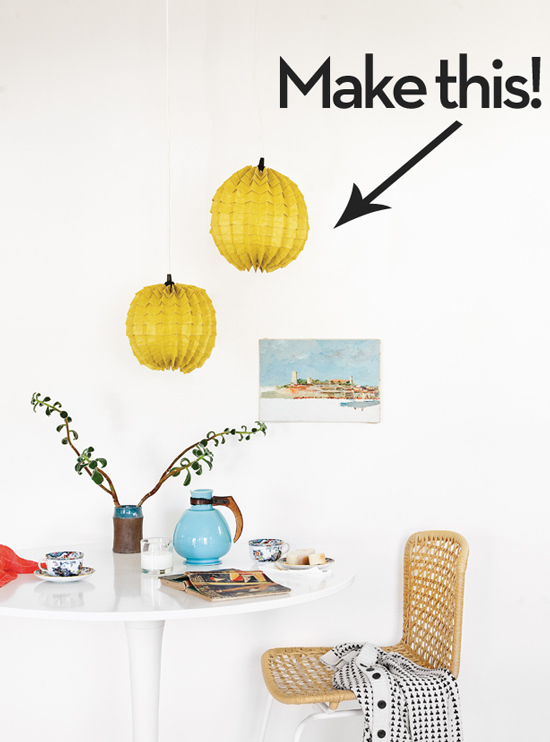Q: What’s more fun than a brightly colored, modern, pleated paper lamp shade?
A: A brightly colored, modern, pleated paper lamp shade you made yourself!
Because paper is somewhat rigid and requires only minimal interior framing, it is perfect for making lamp shades. You start this project with a rectangular sheet of paper, pleat it in two different directions, and then, to make a sphere, reshape the pleats by arching them open one row at a time—no cutting involved. It’s a really cool process with beautiful results. This project comes to Curbly from the fantastic new book, Modern Paper Crafts by Margaret Van Sicklen.
SUPPLIES
- Practice paper: One 8½”-wide x 11″-long sheet of copy paper
- One 24″-wide x 37″-long rectangle of thin, crisp, translucent paper
- 24″ metal ruler
- Pencil Bone or wood folder
- Removable tape
- Glue stick
- ¹⁄8″-round paper punch
- Kitchen twine
- lamp kit
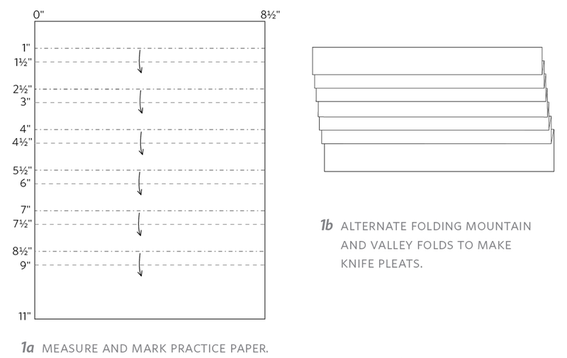
1. Measure and mark the outside edges of the practice paper. Then, starting at the top of the paper and working your way down, fold the marked alternating mountain and valley folds in Drawing. Use a bone folder to crease the folded edges flat. The resulting pleats will overlap, like pleats in a kilt.
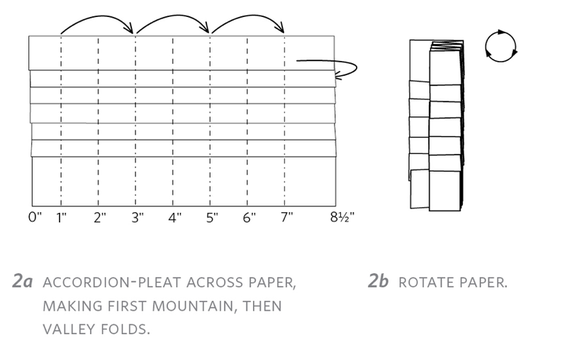
2. In this step, the pleating technique produces stacked pleats all the same size that sit atop one another like pleats in a closed fan. Mark 1″ increments for 7″ at the top and bottom edges. Starting on the left edge and working across the paper, mountain-fold and then valley-fold the marked lines. Use a bone folder to firmly crease the folded edges flat. Then rotate the paper, so it’s horizontal, with the long extending edge positioned at the back.
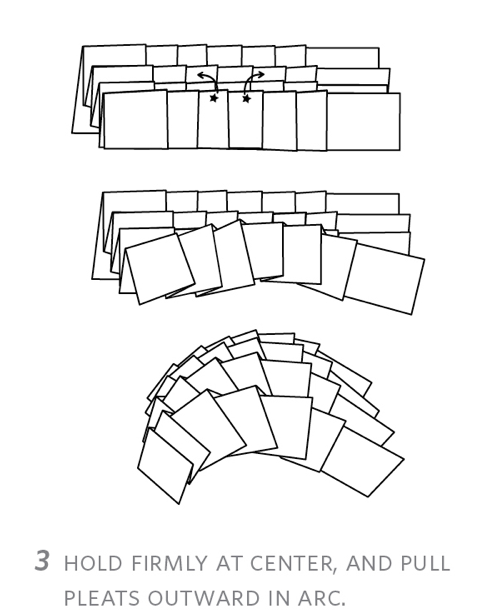
3. Holding the paper firmly where marked with stars, pull the center pleats, and then the surrounding pleats, outward in an arc. Continue to shape the paper by arching the pleats of each row. Isn’t that cool? I love shaping these pleats and seeing a sphere emerge (note that the practice sheet produces a quarter-slice of a sphere).
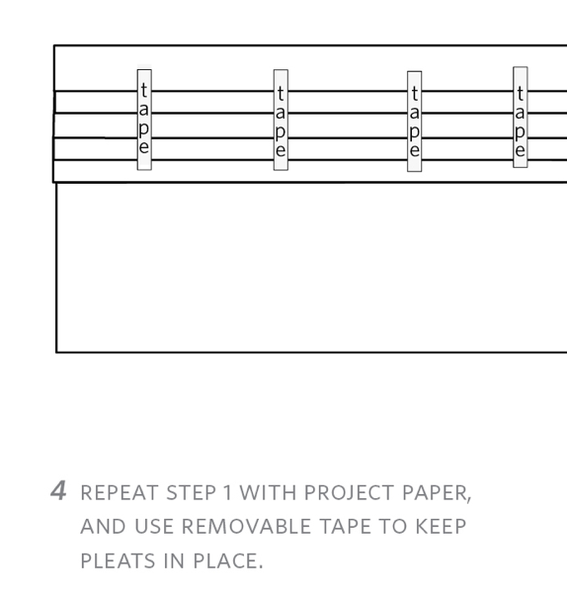
4. Now that you have successfully completed the practice pleats, repeat Step 1 to measure and mark your paper for the lamp shade. To reinforce the paper’s top edge, fold this edge 1″ to the back side so that the shade’s edge will be double-layered. Continue to work your way down the paper as you did with the practice paper, mountain-folding and valley-folding the marked lines. Since this paper is much larger than your practice sheet, I suggest using removable tape to hold the pleats in place as you work. Otherwise the pleats can splay out, and things can get out of whack quickly. To secure the pleats, place long vertical strips of tape across several pleats at a time, spacing the tape about every 8″ to 10″.
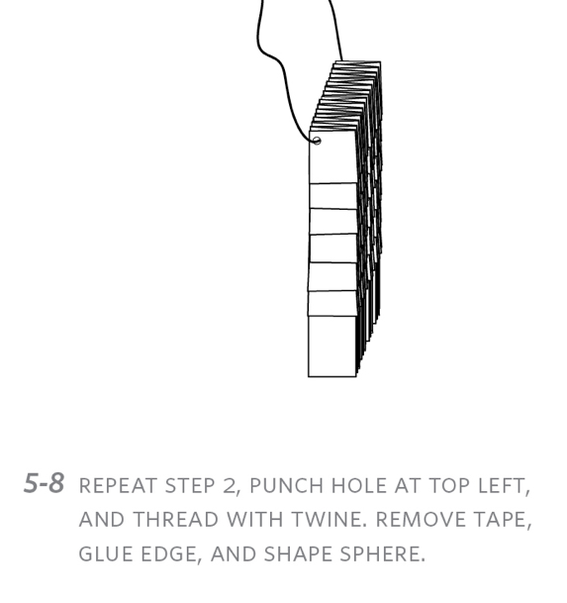
5. Repeat step 2 to fold the vertical stacked pleats every inch, alternating the mountain and valley folds and stacking the pleats accurately atop one another. In the left upper corner of the stacked pleats, punch a hole about ¼” down and in from the edge through all the pleats.
6. Thread a piece of twine through the hole, and cinch the top of the shade. Loosely tie the twine in a bow rather than a knot since you may need to adjust the size of the opening.
7. To begin shaping the sphere, remove the tape securing the pleats, and overlap the end pleats, right over left, so the seam sits in the valley of the pleat. Once you’ve seen how to position the seam, lift up the upper edge, and swipe glue stick along the lower edge. Reposition the edges to make the seam, this time interlocking the horizontal pleats on the back of one edge with the horizontal pleats on the front of the other edge, so the form appears continuous. Pinch the top and bottom edges together until the glue sets.
8. Once the glue has set, repeat step 3 to shape the sphere. Holding the paper firmly, pull each pleat in one row outward in an arc. Continue shaping the pleats of each row into arcs. Take your time as you move through the shaping process, and be sure that the shade is evenly shaped on all sides (looking at the shape in profile will help you see if it’s balanced). I like to hang this shade as one of a group of pendant lights, placing it over an inexpensive shade that’s fire-resistant. And keep in mind that the heat from the bulb needs to escape through the top of the shade, so don’t cinch the top too tight.
When attaching this lamp shade to a light source, always follow the UL-recommended maximum wattage on the fixture and shade. Do not use this shade with a halogen or quartz lamp as they get much too hot. The least complicated way to use this shade is to slip it over a premade shade, adhering the two by placing beads of tack glue, such as Aleene’s Tacky Glue, at the top and bottom edges of the premade shade. Don’t cinch the top or bottom of your shade tightly. Leave an opening, so the heat from the bulb can escape and air can circulate. The other option is to secure the pleated shade to a metal frame. For the pendant-style lamp pictured, purchase a frame fitted with a butterfly clip that snaps over the bulb. Using a needle threaded with cord, stitch around the inside edge, catching both the lamp shade and the ring at the top of the frame with each stitch. Again, don’t cinch the top or bot¬tom tightly, and leave an opening, so the heat from the bulb can escape and air can circulate.
Learn more about Modern Paper Crafts at Melanie Falick Books, and about Margaret Van Sicklen at her website.
Modern Paper Crafts: A 21st-Century Guide to Folding, Cutting, Scoring, Pleating, and Recycling by Margaret Van Sicklen, published by STC Craft | Melanie Falick Books, an imprint of Stewart, Tabori & Chang, 2011.
